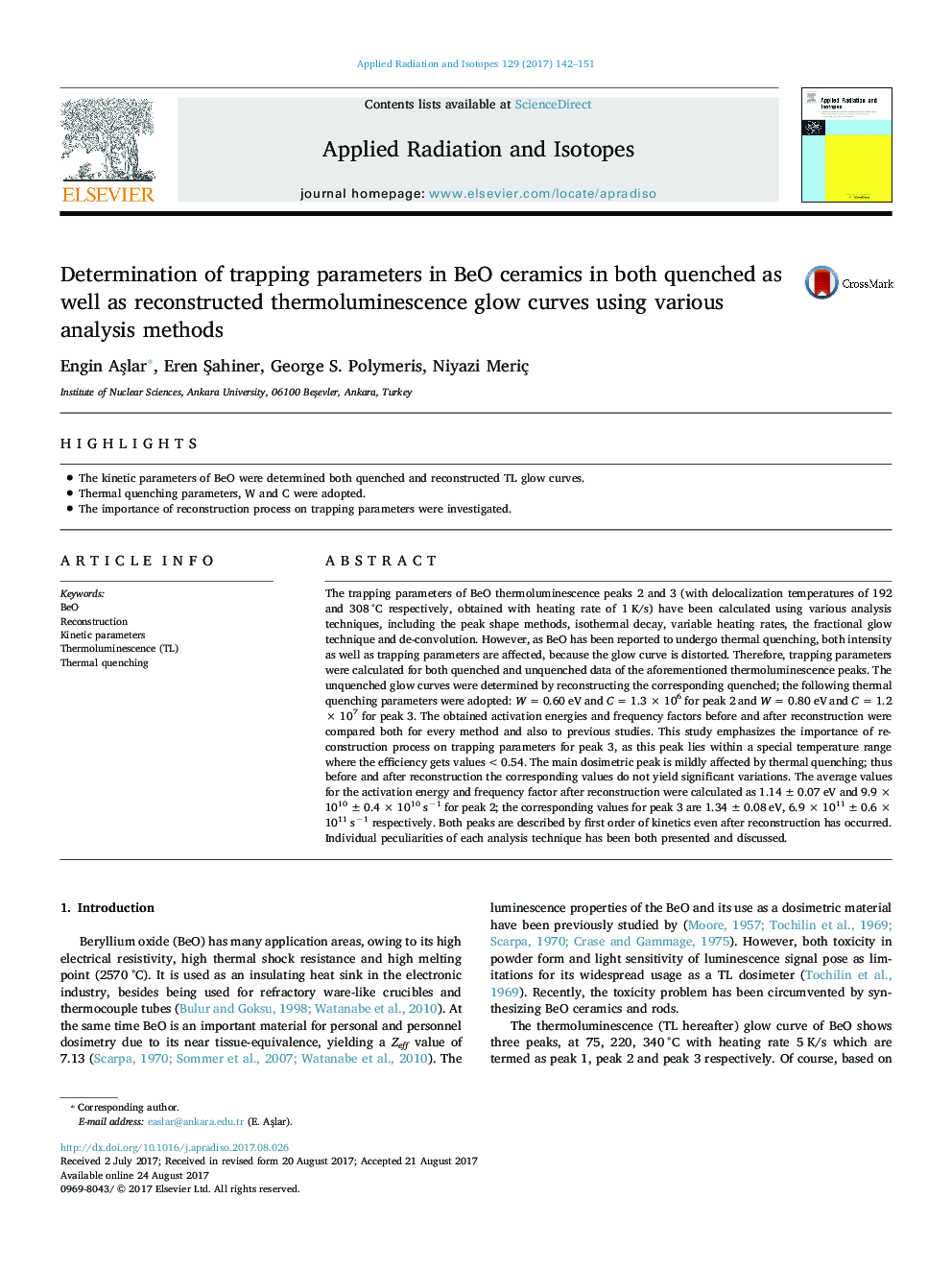| کد مقاله | کد نشریه | سال انتشار | مقاله انگلیسی | نسخه تمام متن |
|---|---|---|---|---|
| 5497655 | 1532068 | 2017 | 10 صفحه PDF | دانلود رایگان |
عنوان انگلیسی مقاله ISI
Determination of trapping parameters in BeO ceramics in both quenched as well as reconstructed thermoluminescence glow curves using various analysis methods
دانلود مقاله + سفارش ترجمه
دانلود مقاله ISI انگلیسی
رایگان برای ایرانیان
کلمات کلیدی
موضوعات مرتبط
مهندسی و علوم پایه
فیزیک و نجوم
تشعشع
پیش نمایش صفحه اول مقاله

چکیده انگلیسی
The trapping parameters of BeO thermoluminescence peaks 2 and 3 (with delocalization temperatures of 192 and 308 °C respectively, obtained with heating rate of 1 K/s) have been calculated using various analysis techniques, including the peak shape methods, isothermal decay, variable heating rates, the fractional glow technique and de-convolution. However, as BeO has been reported to undergo thermal quenching, both intensity as well as trapping parameters are affected, because the glow curve is distorted. Therefore, trapping parameters were calculated for both quenched and unquenched data of the aforementioned thermoluminescence peaks. The unquenched glow curves were determined by reconstructing the corresponding quenched; the following thermal quenching parameters were adopted: W = 0.60 eV and C = 1.3 à 106 for peak 2 and W = 0.80 eV and C = 1.2 à 107 for peak 3. The obtained activation energies and frequency factors before and after reconstruction were compared both for every method and also to previous studies. This study emphasizes the importance of reconstruction process on trapping parameters for peak 3, as this peak lies within a special temperature range where the efficiency gets values < 0.54. The main dosimetric peak is mildly affected by thermal quenching; thus before and after reconstruction the corresponding values do not yield significant variations. The average values for the activation energy and frequency factor after reconstruction were calculated as 1.14 ± 0.07 eV and 9.9 à 1010 ± 0.4 à 1010 sâ1 for peak 2; the corresponding values for peak 3 are 1.34 ± 0.08 eV, 6.9 à 1011 ± 0.6 à 1011 sâ1 respectively. Both peaks are described by first order of kinetics even after reconstruction has occurred. Individual peculiarities of each analysis technique has been both presented and discussed.
ناشر
Database: Elsevier - ScienceDirect (ساینس دایرکت)
Journal: Applied Radiation and Isotopes - Volume 129, November 2017, Pages 142-151
Journal: Applied Radiation and Isotopes - Volume 129, November 2017, Pages 142-151
نویسندگان
Engin AÅlar, Eren Åahiner, George S. Polymeris, Niyazi Meriç,